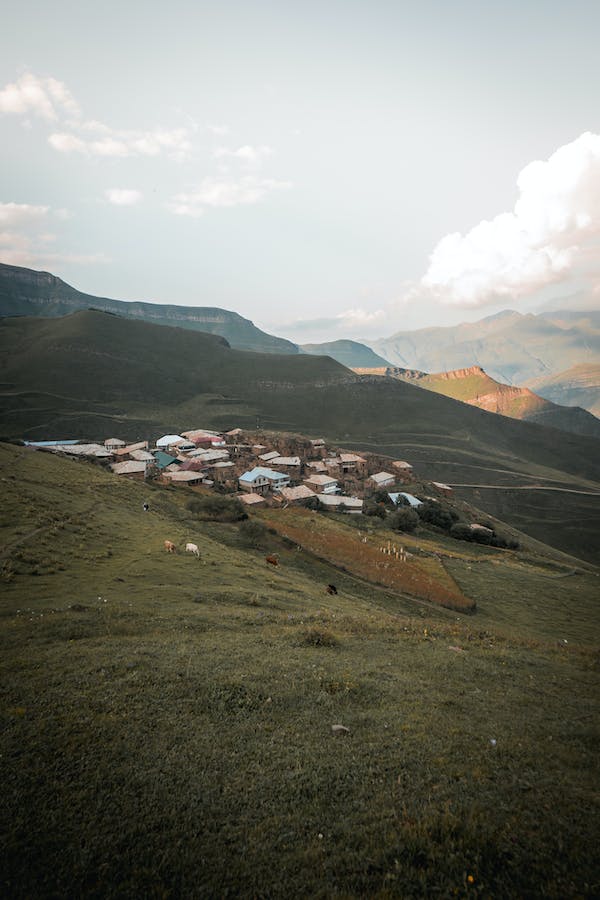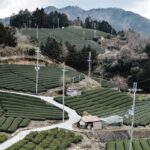
Rural Definition for Development

Rural Definition – Rural areas are often thought of as peaceful, scenic places where people can escape the hustle and bustle of the city. However, defining what constitutes a rural area can be more complicated than it seems. Different organizations and government agencies use different criteria to define rural areas, which can lead to confusion and misunderstandings.
One common definition of rural areas is based on population density. According to the United States Census Bureau, areas with fewer than 2,500 people are considered rural. However, this definition can be problematic because it doesn’t take into account other factors that can affect a community’s rural character, such as its geography, economy, and culture. Other organizations, such as the United States Department of Agriculture, use more nuanced criteria to define rural areas, taking into account factors such as land use, economic activity, and population density.
Despite these challenges, it’s important to have a clear understanding of what constitutes a rural area, as well as the key characteristics, advantages, and challenges of rural life. This article will explore the various definitions of rural areas, as well as the unique opportunities and obstacles that rural communities face.
Key Takeaways
- Rural areas are often defined by population density, but other factors such as geography, economy, and culture can also play a role.
- Rural areas offer unique advantages such as natural beauty and a strong sense of community, but can also face challenges such as limited access to healthcare and education.
- Rural development strategies must take into account the unique needs and characteristics of rural communities, and should focus on promoting economic growth and improving quality of life.
Rural Definition
https://www.youtube.com/watch?v=MDsnxaGRbHs&embed=true
Defining rural areas can be challenging because there are many different ways to do it. Researchers and policymakers use various definitions to distinguish rural areas from urban areas, which often leads to confusion and mismatches in program eligibility.
According to the United States Department of Agriculture (USDA), rural areas are those that are not urban. The Census Bureau does not define rural; instead, it encompasses all population, housing, and territory not included within an urban area. Therefore, whatever is not urban is considered rural.
The USDA has developed rural definitions based on population thresholds. Areas with populations at or below the population threshold are considered eligible rural areas, whereas areas with populations above the threshold are considered non-rural and therefore ineligible.
The population threshold varies depending on the program or policy being implemented. For example, the USDA’s Rural Development Program considers areas with populations of up to 35,000 to be rural, while the Centers for Medicare and Medicaid Services consider areas with populations of up to 50,000 to be rural.
It is worth noting that rural areas are not homogeneous, and rural communities can vary widely in terms of their demographics, economic characteristics, and land use. Therefore, it is essential to have a nuanced understanding of rural areas when designing policies and programs that affect them.
Key Characteristics of Rural Areas
https://www.youtube.com/watch?v=gpjiSm-fmRk&embed=true
Rural areas are often defined by their population density, distance from urban centers, and economic activity. Understanding these key characteristics is important for policymakers, researchers, and others who work in rural areas.
Population Density
Rural areas are generally characterized by low population density. According to the United States Census Bureau, rural areas are those with a population density of less than 500 people per square mile. This is in contrast to urban areas, which have a population density of at least 1,000 people per square mile.
Low population density can have both advantages and disadvantages. On the one hand, it can provide a sense of community and a slower pace of life. On the other hand, it can make it more difficult to access services and amenities.
Distance From Urban Centers
Rural areas are often located far from urban centers. This can make it more difficult to access jobs, healthcare, and other services. According to the USDA, rural areas are defined as those that are not part of a metropolitan area and are located outside of urbanized areas with a population of 50,000 or more.
The distance from urban centers can also impact economic activity in rural areas. For example, rural areas may have fewer job opportunities and lower wages than urban areas.
Economic Activity
Rural areas are often characterized by a different mix of economic activities than urban areas. According to the USDA, agriculture and natural resource extraction are important economic activities in many rural areas. In addition, rural areas may have fewer large employers and more small businesses than urban areas.
The mix of economic activities in rural areas can impact the overall economic well-being of the area. For example, if a rural area is heavily dependent on a single industry, such as agriculture, it may be more vulnerable to economic downturns in that industry.
Overall, understanding the key characteristics of rural areas is important for developing policies and programs that meet the unique needs of these communities.
Types of Rural Areas
https://www.youtube.com/watch?v=8-Zvzh8L6Vs&embed=true
There are two main types of rural areas: Remote Rural and Accessible Rural.
Remote Rural
Remote rural areas are defined as areas that are far from urban centers and have limited access to services and amenities. These areas are typically characterized by low population density, limited transportation options, and a lack of infrastructure. Residents of remote rural areas may have difficulty accessing healthcare, education, and other essential services.
Accessible Rural
Accessible rural areas are defined as areas that are within a reasonable distance of urban centers and have access to services and amenities. These areas are typically characterized by higher population density, better transportation options, and more infrastructure. Residents of accessible rural areas may have an easier time accessing healthcare, education, and other essential services than those in remote rural areas.
Overall, the distinction between remote and accessible rural areas can have significant implications for policy and decision-making. Policymakers must carefully consider the unique needs and challenges of each type of rural area when developing programs and initiatives aimed at supporting rural communities.

Challenges of Rural Areas
https://www.youtube.com/watch?v=wzAnqt8xCX8&embed=true
Rural areas face unique challenges that can impact the quality of life for residents. These challenges include inadequate infrastructure, limited access to healthcare, education, and employment opportunities.
Infrastructure
Rural areas often struggle with inadequate infrastructure, including poor road conditions, limited access to high-speed internet, and outdated water and sewage systems. These challenges can make it difficult for residents to access essential services and can limit economic development opportunities.
Healthcare
Access to healthcare is a major challenge in rural areas. Many rural communities lack sufficient healthcare providers, and those that are available may be overworked and understaffed. This can lead to long wait times for medical appointments and limited access to specialized care. Rural residents may also face challenges accessing affordable health insurance.
Education
Rural areas often struggle to provide quality education to residents. Limited funding can make it difficult to attract and retain qualified teachers, and schools may lack resources and technology that are available in urban areas. This can limit educational opportunities for rural students and make it more difficult for them to compete in the job market.
Employment Opportunities
Rural areas may struggle to provide a diverse range of employment opportunities. Many rural communities rely on a single industry, such as agriculture or mining, which can be vulnerable to economic fluctuations. Limited access to high-speed internet can also make it difficult for rural residents to work remotely or access online job opportunities.
Overall, addressing these challenges is critical to improving the quality of life for rural residents and promoting economic development in these areas.
Advantages of Rural Areas
https://www.youtube.com/watch?v=olcvWt3swYM&embed=true
Rural definition and Living in a rural area has its own unique advantages that are not found in urban areas. In this section, we will discuss some of the advantages of living in rural areas.
Community Cohesion
One of the biggest advantages of living in a rural area is the strong sense of community. Rural areas are often characterized by close-knit communities where people know each other and are willing to help each other out. This sense of community is often reflected in the many events and activities that take place in rural areas, such as fairs, festivals, and community gatherings.
Natural Environment
Another advantage of living in a rural area is the natural environment. Rural areas are often characterized by beautiful natural landscapes, such as mountains, forests, and lakes. This natural environment provides many opportunities for outdoor activities, such as hiking, fishing, and camping. Additionally, the natural environment in rural areas often provides a sense of peace and tranquility that is not found in urban areas.
Quality of Life
Finally, living in a rural area often leads to a higher quality of life. Rural areas are often less crowded and less polluted than urban areas. This can lead to a healthier lifestyle, as people have access to clean air and water. Additionally, rural areas often have a lower cost of living than urban areas, which can lead to a better standard of living for many people.
In conclusion, living in a rural area has many advantages, including a strong sense of community, a beautiful natural environment, and a higher quality of life. While rural areas may not be for everyone, those who are looking for a slower pace of life and a closer connection to nature and community may find that rural living is the right choice for them.
Rural Development Strategies
https://www.youtube.com/watch?v=BTy7B8tUyao&embed=true
Rural definition and Rural development is a process aimed at improving the economic and social well-being of people living in rural areas. The development strategies for rural areas are designed to improve the quality of life for rural residents by creating jobs, increasing incomes, and providing access to essential services. There are several strategies that can be used to achieve rural development, including agriculture, tourism, and technology.
Agriculture
Agriculture is one of the most important sectors in rural development. Rural definition involves the cultivation of crops, raising of livestock, and other related activities. Agriculture can provide employment opportunities, increase income, and contribute to food security. To achieve rural development through agriculture, the following strategies can be adopted:
- Diversification of crops and livestock to increase productivity and income.
- Use of modern farming techniques to improve yields and reduce costs.
- Promotion of value addition to agricultural products to increase their value and marketability.
- Provision of credit facilities to farmers to enable them to access capital for production and expansion.
Tourism
Tourism is another strategy that can be used to achieve rural development. Rural areas have unique natural and cultural resources that can attract tourists. Tourism can create employment opportunities, increase income, and contribute to the preservation of cultural heritage. To achieve rural development through tourism, the following strategies can be adopted:
- Development of tourist attractions such as parks, museums, and cultural centers.
- Promotion of rural tourism through marketing and advertising.
- Provision of training and capacity building for local communities to enable them to participate in tourism activities.
- Development of infrastructure such as roads, hotels, and other facilities to support tourism.
Technology
Technology is a key driver of rural development. It can improve productivity, increase efficiency, and reduce costs. Technology can also provide access to essential services such as health care and education. To achieve rural development through technology, the following strategies can be adopted:
- Provision of access to information and communication technology (ICT) infrastructure such as internet connectivity and mobile phones.
- Promotion of e-commerce and online platforms to enable rural entrepreneurs to access markets and sell their products.
- Development of renewable energy sources such as solar and wind power to provide electricity to rural areas.
- Provision of training and capacity building for local communities to enable them to use technology effectively.
In conclusion, rural definition and rural development strategies are designed to improve the economic and social well-being of people living in rural areas. Agriculture, tourism, and technology are some of the key strategies that can be used to achieve rural development. By adopting these strategies, rural areas can become more prosperous, sustainable, and resilient.
Frequently Asked Questions
https://www.youtube.com/watch?v=a4HE-rLCcSM&embed=true
What is the official definition of a rural area according to the USDA?
The USDA and the rural definition areas as any area that is not located in an urban area or urban cluster. The agency further defines an urban area as having a population of 50,000 or more people, while an urban cluster has a population of 2,500 to 49,999 people. The USDA also considers any territory, housing, or people that are not within an urban area or urban cluster as rural.
What percentage of the US population lives in rural areas?
According to the United States Census Bureau, in 2020, approximately 17% of the US population lived in rural areas. This percentage has been declining over the years as more people move to urban areas in search of economic opportunities and better living conditions.
What are some examples of rural areas in the United States?
Some examples of rural areas in the United States include small towns, farming communities, and remote areas with low population densities. States like Montana, Wyoming, and Alaska have some of the largest rural populations in the country.
What is the difference between rural and urban areas?
The main difference between rural and urban areas is the population density. Rural areas are characterized by low population densities, while urban areas have high population densities. Urban areas are also typically more developed, with better infrastructure, more economic opportunities, and access to a wider range of services.
How does the definition of rural vary across different countries?
The rural definition can vary across different countries, depending on factors such as population density, economic development, and cultural norms. In some countries, rural areas may be defined based on the type of economic activities that take place there, such as agriculture or mining.
What are some challenges faced by rural communities in terms of access to healthcare and education?
Rural communities often face challenges when it comes to accessing healthcare and education services. Due to their low population densities, rural areas may have fewer healthcare facilities and schools, making it harder for residents to access these services. Additionally, rural definition and rural areas may have a higher proportion of low-income residents, which can further exacerbate these challenges.









Leave a Reply